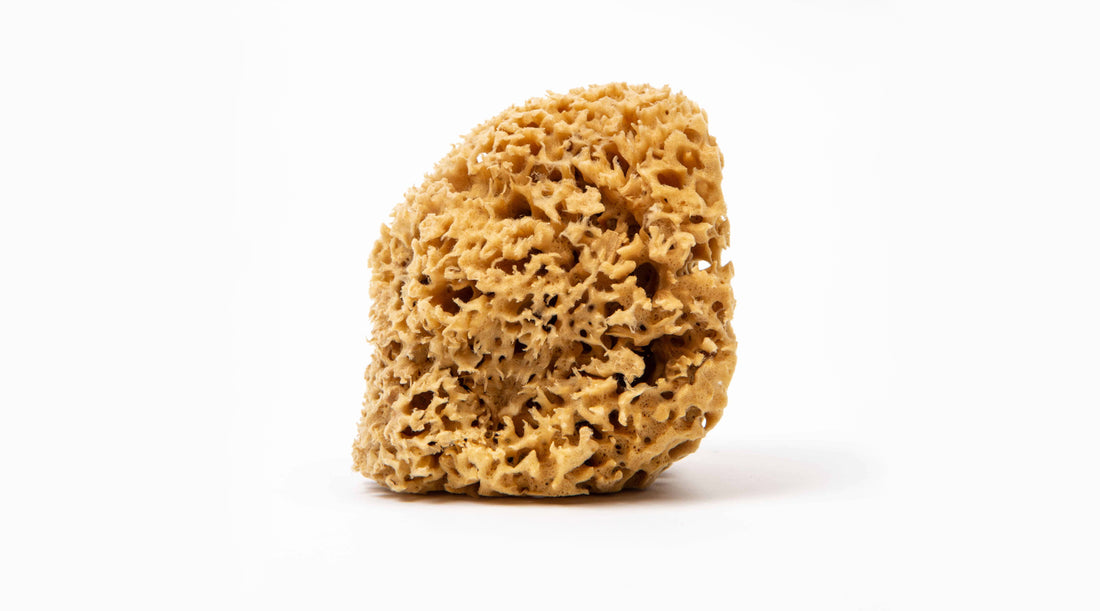Natural sponges are, well, natural. This includes loofahs, but we are primarily concerned with sea sponges, a natural marine creature that grows in various temperate seas around the world. But that doesn’t necessarily mean that the process to get them from the seabed to your bathroom is natural too. So, how are natural sponges harvested?
In this guide, we will take you through our process for harvesting sponges at Naroa.
This method is based on the traditional method of harvesting sponges. It’s the method that our ancestors used going all the way back to Ancient Greece and it’s the method that we would like to teach to future generations. However, not all sea sponge providers use the same harvesting method. Choosing Naroa means selecting an ethical and eco-friendly way to get a sea sponge – you can learn more about that in our article Are Natural Sponges Ethical?
The process of natural sponge harvesting
Our process for harvesting sponges is all about supporting marine life. Sea sponges are just one part of the marine eco-system, so maintaining their population also helps all creatures that are living in the same habitat.
This is the traditional process we use, step by step:
- Sending out experienced divers into the Caribbean and Mediterranean Seas. These are long sponging trips that typically last up to a month.
- The divers look for sponges going down to depths of 40 meters, finding sponges that are larger than our minimum size requirement. This ensures small sponges can continue growing.
- Good-sized sponges are cut at the base, just above the root. This allows the sponge to regrow, which ensures that it comes back even healthier than before and supports the sponge population.
- As they are being harvested, small pieces of sponge that break away can float to new areas of the seabed. Once settled, they can grow into a completely new sponge and boost the population. It’s another great benefit of hand-harvesting!
- After the sponges are cut, they are brought up to the boat and washed with sea water to remove any stones or debris. Once washed, they are hung to dry in the sun.
- Once the sponging trip is complete, the divers return to shore where the sponges are then further processed, cut, and trimmed.
- We inspect each sponge before packaging it up in plastic-free materials to be sent to our customers around the world.
This method ensures that the sponge population can continue to thrive. As a result, they support reefs, filter sea water, and continue to contribute to the marine eco-system.
It’s also worth noting that our divers rotate fishing grounds regularly, which gives the sponges time to regrow productively and in a healthy manner. This also limits human contact with reefs and marine life in general, ensuring that natural habitats don’t become damaged with frequent visits.
An ethical bathing sponge for dead skin removal!
So, to summarize this article, the harvesting process of sea sponges at Naroa is completely sustainable and a practice that has been going on for generations. With our help, we hope that it will continue for generations in the future too. Sea sponges are undoubtedly the best bathing sponge for dead skin removal and sustainable harvesting is the only way to ensure that we can continue to benefit.
When you use a natural sponge, you will find that the naturally formed fibers create the perfect texture. The sponge quickly creates a luxuriant lather with just a few strokes and has a gentle exfoliating property that’s suitable for all skin types, even sensitive skin.
At Naroa, we take our sponges through multiple quality checks to ensure that our customers receive the best sponges so that your skin can thrive. Find the best high-quality sea sponge for you in our shop at Naroa next or read more articles to expand your knowledge of all things skincare via our blog.

